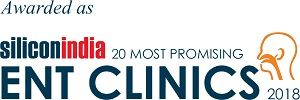Sleep endoscopy is a useful method for studying the dynamic airway in a sleeping patient with Obstructive Sleep Apnea (OSA). The information obtained during this process assists a surgeon in tailoring the operational method to the patient’s condition. Sleep Endoscopy is also referred to as Sleep Nasoendoscopy (SNE) or Drug-Induced Sleep Endoscopy (DISE) (DISE).

Indication
Anyone with proven Obstructive Sleep Apnea (OSA) or a history of severe snoring is advised to have OSA surgery, usually DISE. For accurate analysis, the patient is placed under light sedation and evaluated in real time.
Simply put, all sleep apnea sufferers snore, but not all snorers have sleep apnea. Sleep apnea is characterised by a lack of respiration, which results in a steady drop in oxygen concentration, resulting in a choking episode and arousal.
Some patients aren’t good candidates for a sleep endoscopy: This operation is not recommended if you have any of the following conditions.
Unsafe Airway During Pregnancy
A history of open aspiration
Propofol allergy history, including soybean oil or egg lecithin
In our clinics, we employ Propofol or Dexmedetomidine to induce sleep and do sleep endoscopy.
There is a comprehensive real-time inspection of the nasal cavity for any obstruction in the airways. It is followed by an examination of the upper airway until the vocal chords.
These observations, however, are made only after:
The patient is no longer aroused by the sound of his own voice.
A flexible fiberoptic scope is introduced without waking the patient, but the patient continues to breathe spontaneously.



